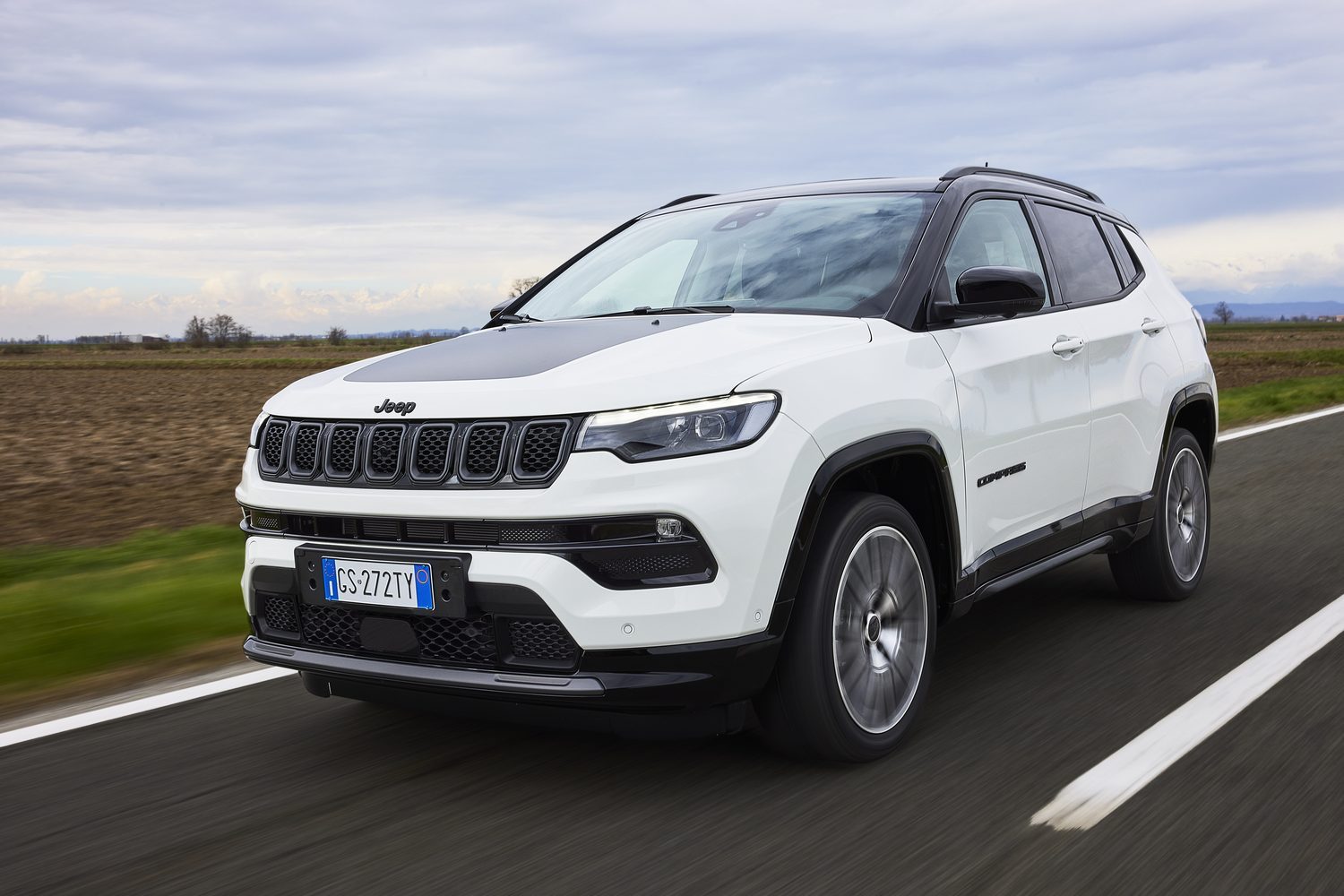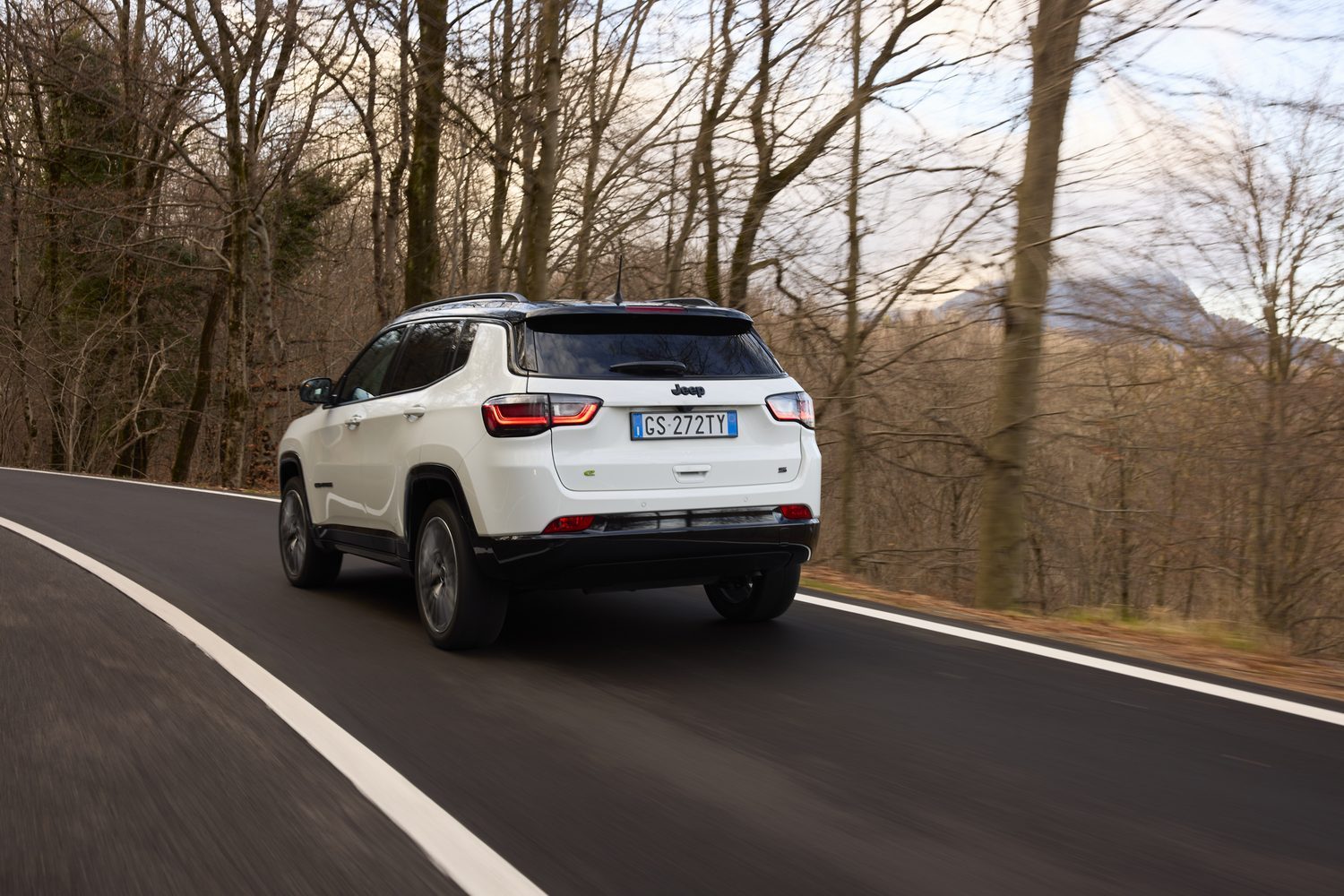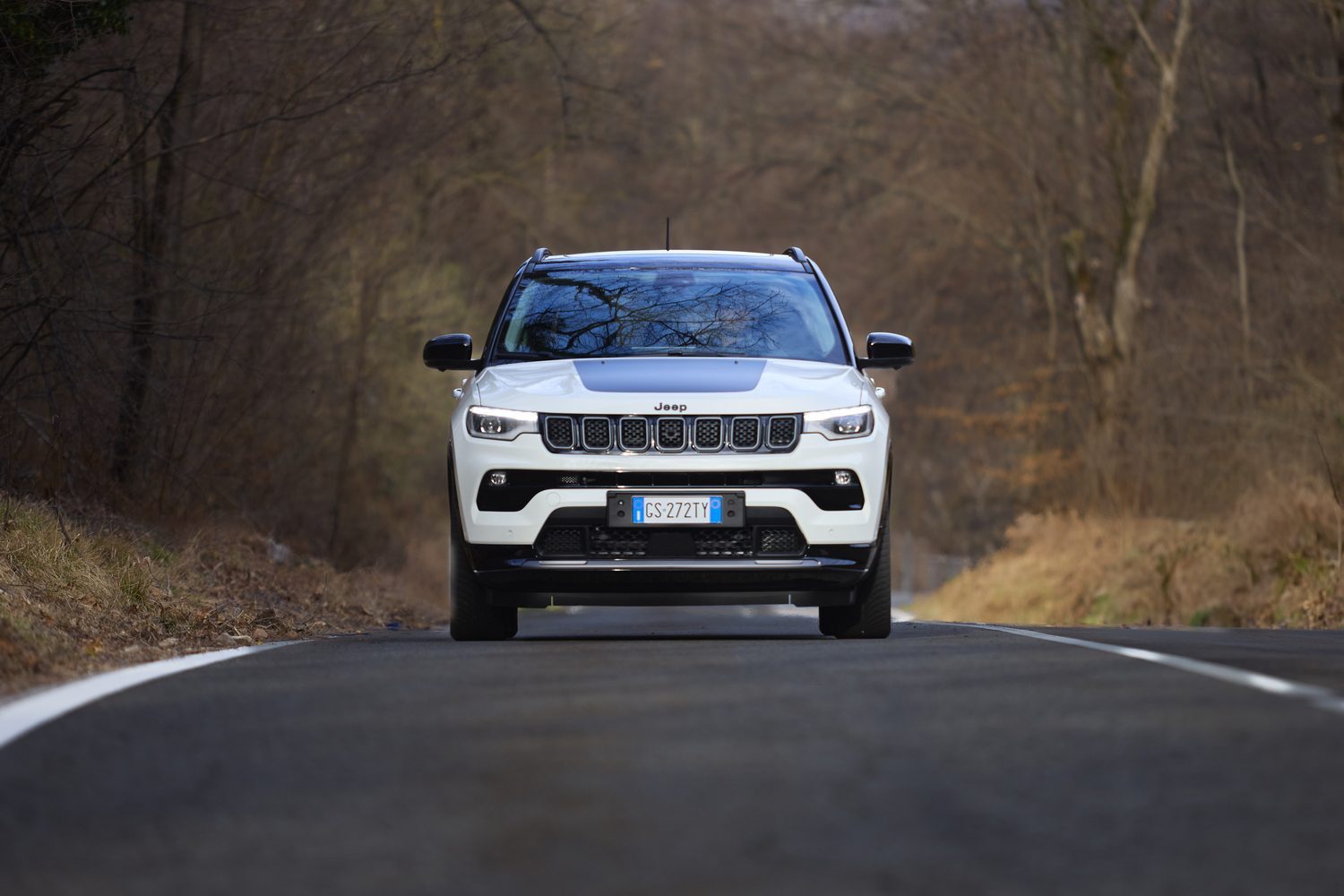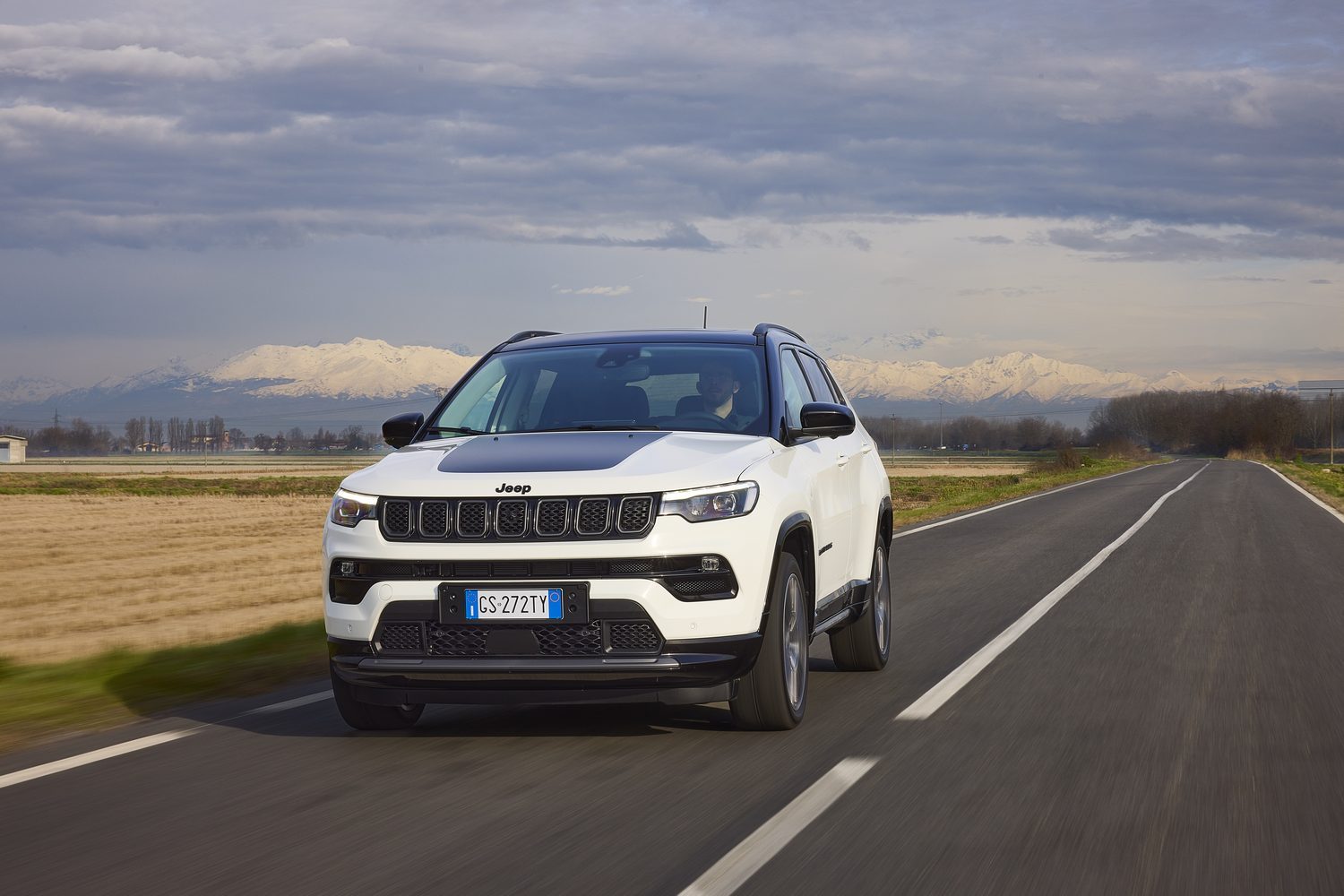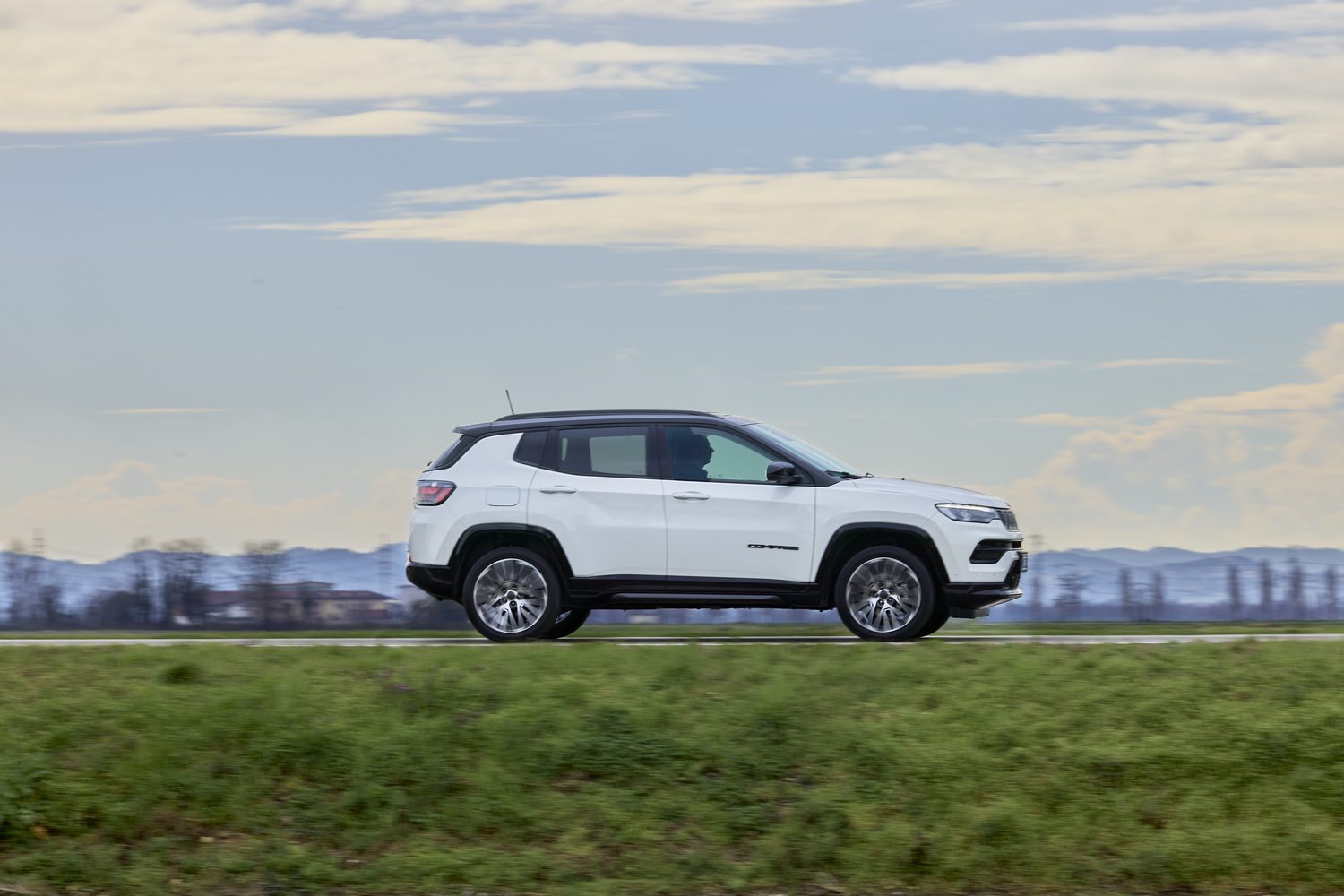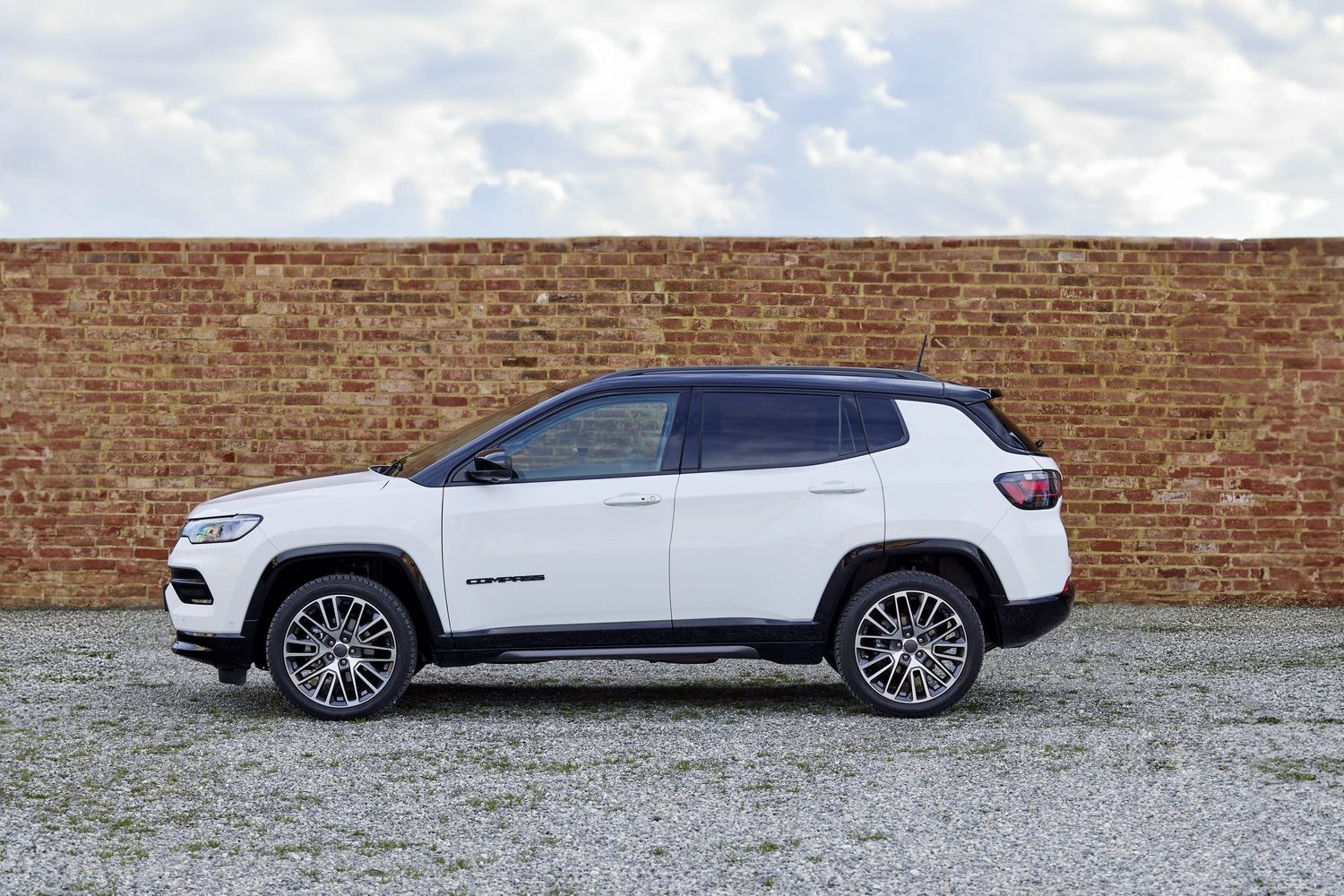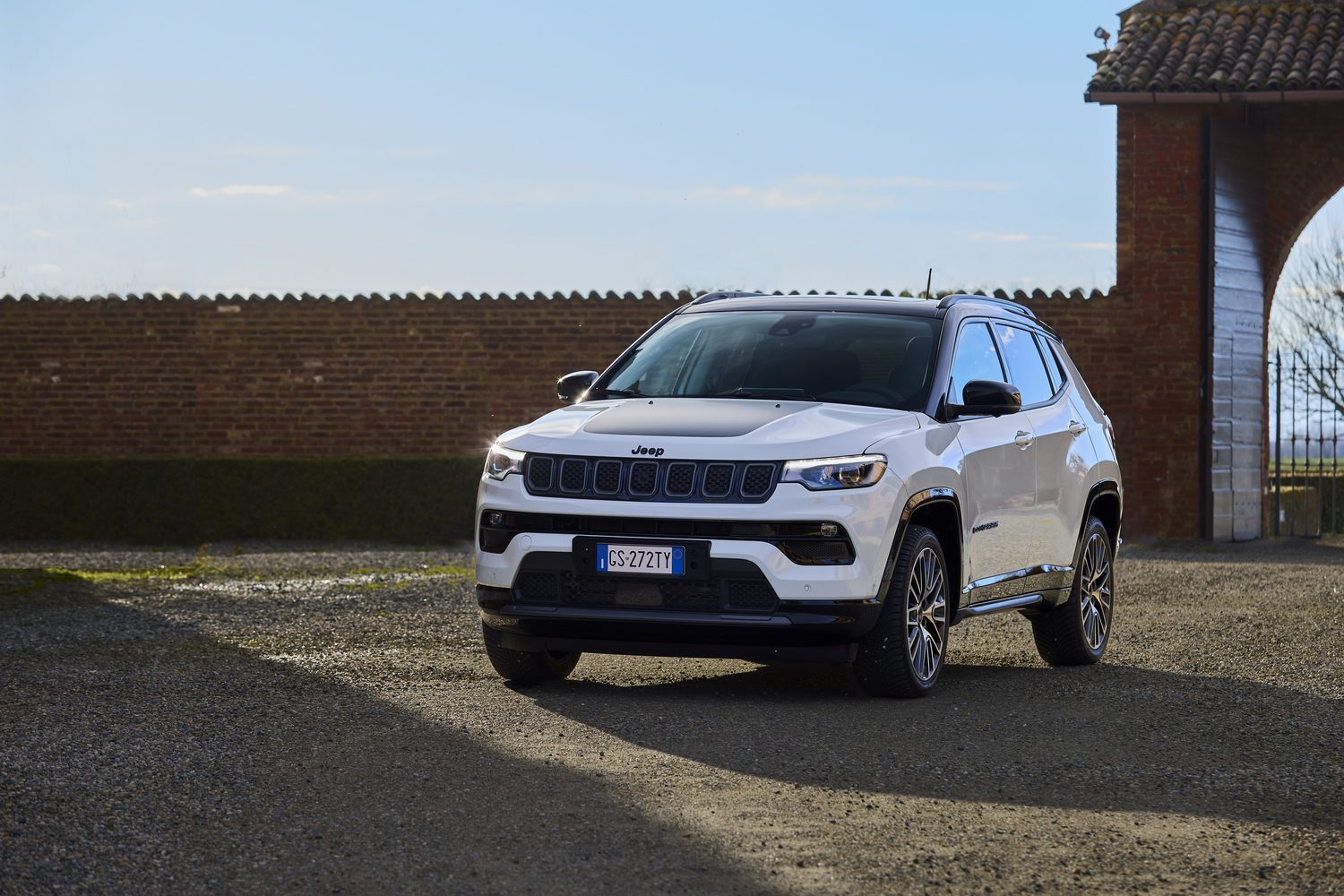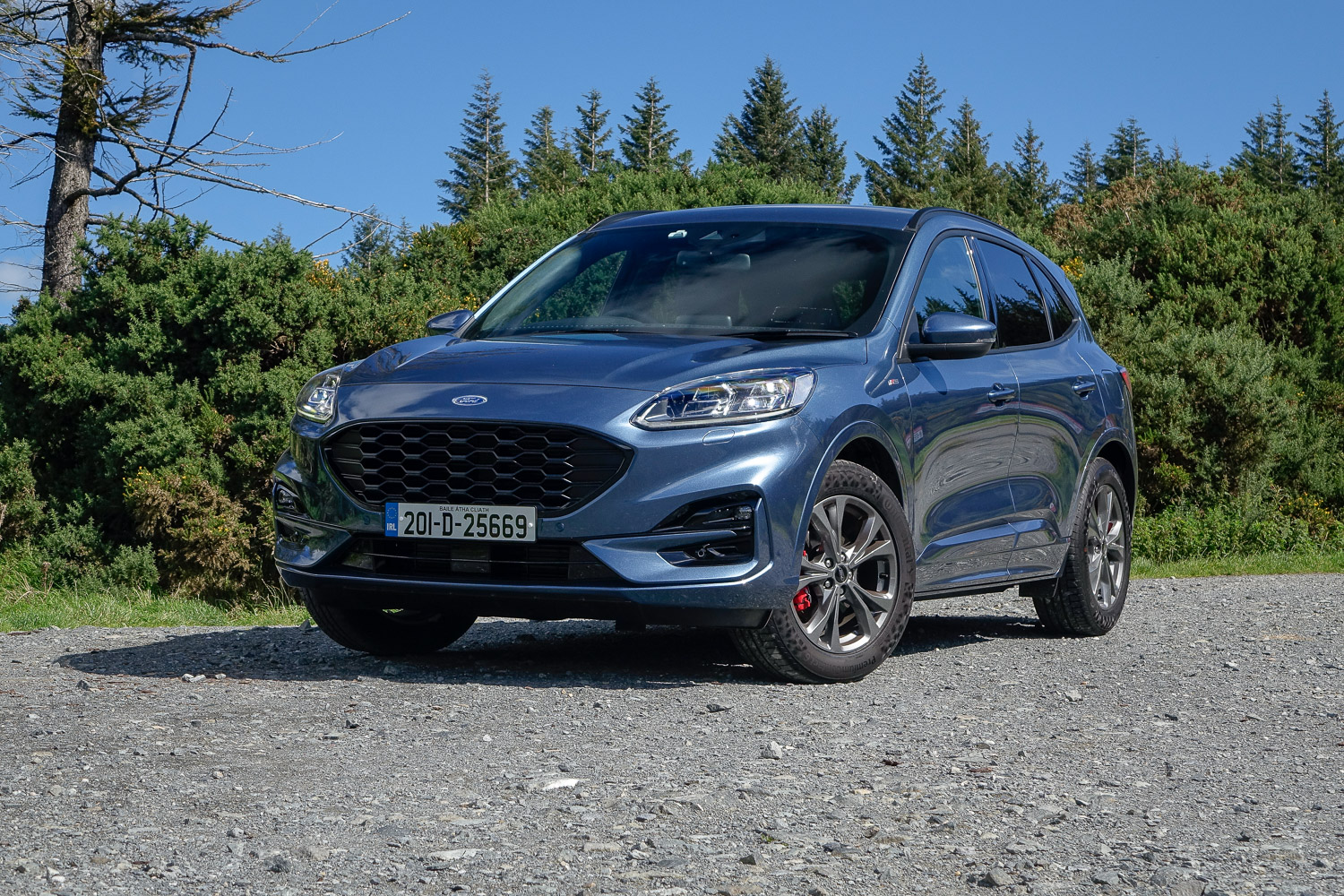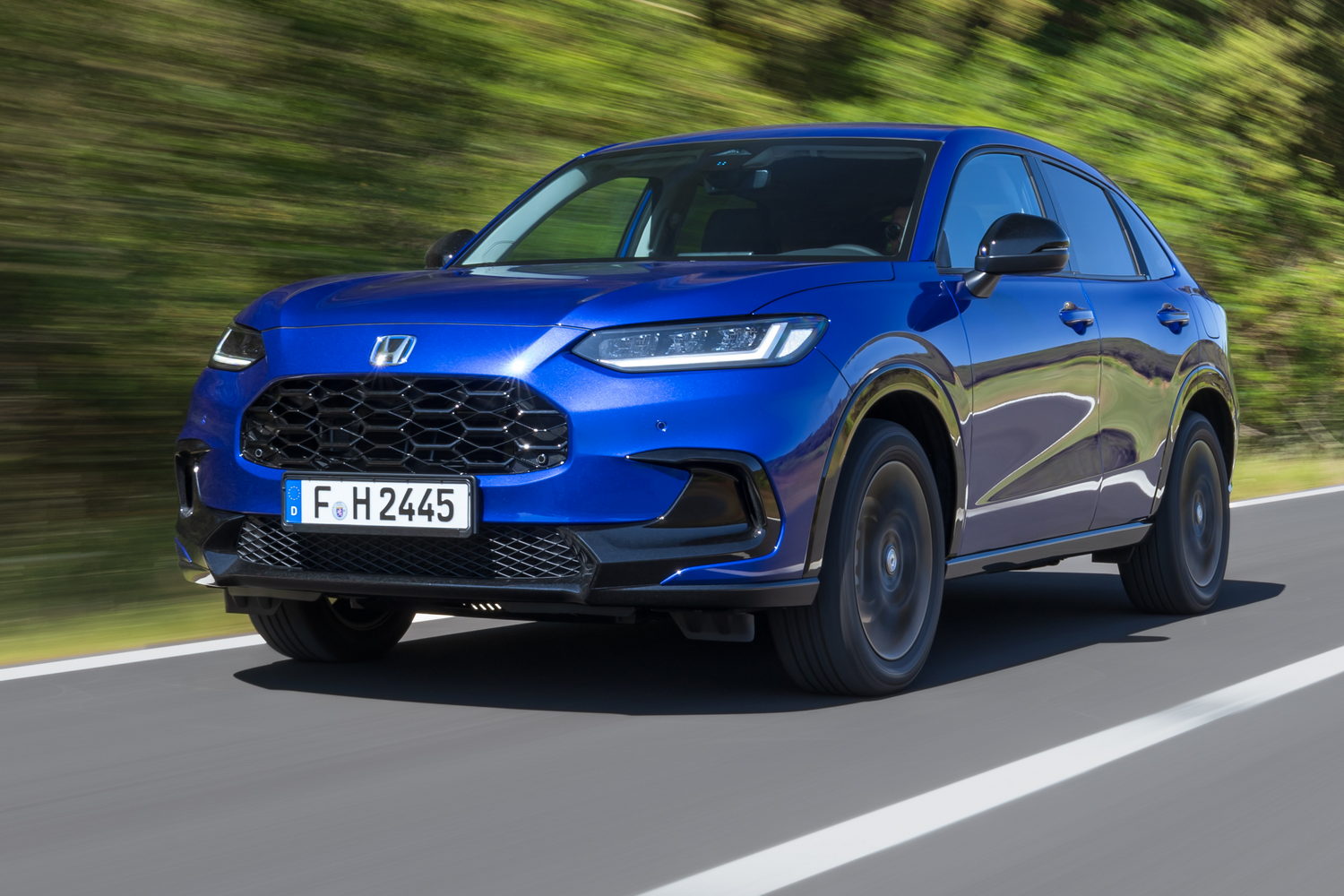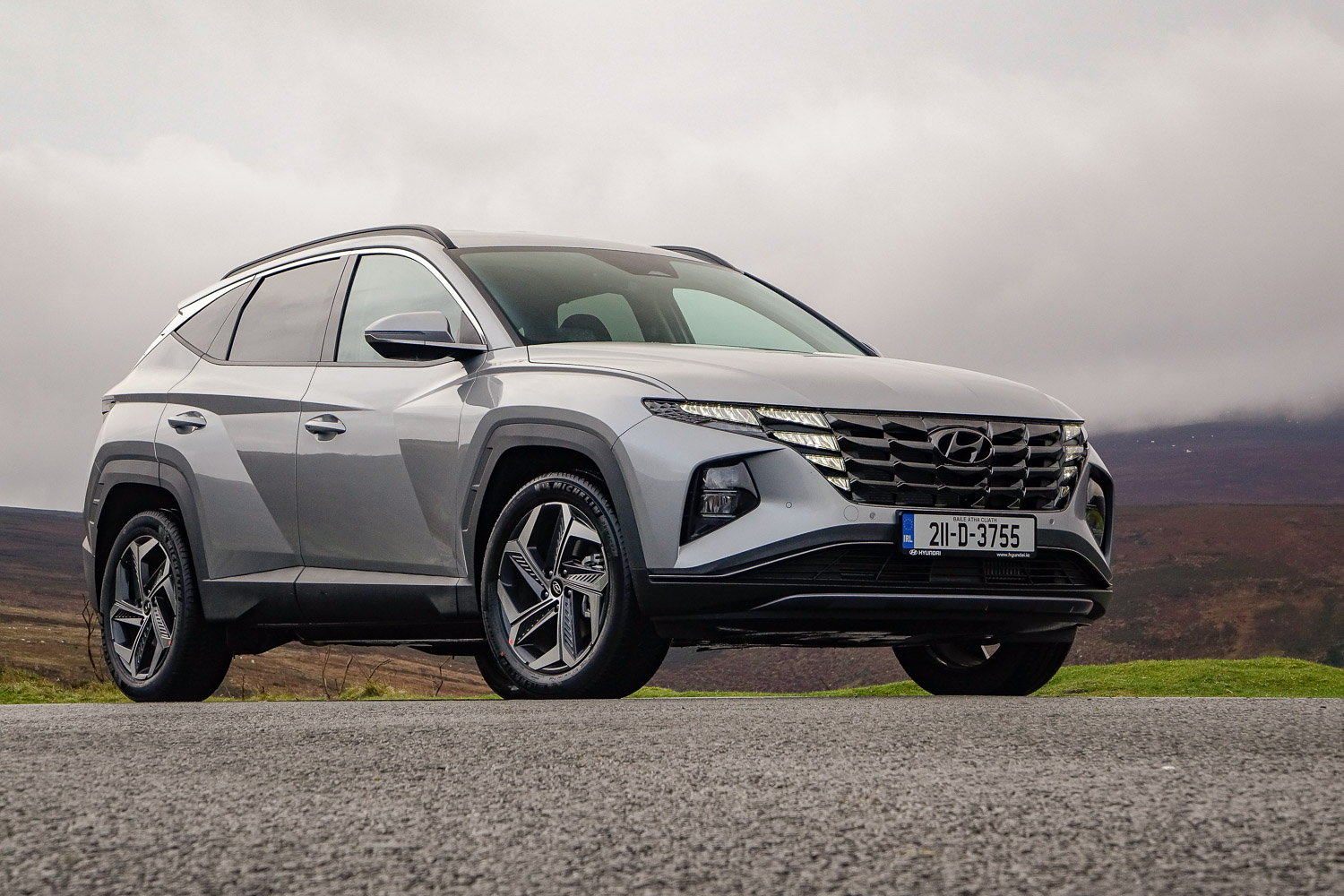In Jeep's congested compact crossover product portfolio, the largest of the three is the Compass, which has been around since 2016. In an attempt to inject some more life into it, Jeep has given this pseudo-SUV the ability to conduct Level 2 autonomous driving, 100 per cent connected telematics across the range, and new tyres that will reduce emissions by three per cent. On the e-Hybrid 48-volt model, are these changes enough to propel the Compass to a higher point in its class, or does it just feel lost in the wilderness?
In the metal
This is an inoffensive compact crossover, albeit one that borders on the aesthetically unimaginative. In S-Model trim, the Compass e-Hybrid does at least gain some sporty-looking black detailing on the exterior to help it stand out, while there's also a little 'S' logo on the back to counterbalance the lower-case green 'e' that indicates this is the 48-volt mild-hybrid edition of Jeep's machine. This generation of the Compass was last facelifted in 2021, so there are no further changes beyond that - and its safe inoffensiveness might indeed preclude the danger of people being put off by any sort of daring for the styling, thus potentially garnering it a wider buying audience, although by the same token it's unlikely anyone would consider this Jeep particularly eye-catching.
The cabin is nice enough, if again largely unadventurous; an unfortunate adjective for a company which would like to convey a corporate image of lifestyle-type owners boldly motoring off into remote terrain in their Jeeps. Anyway, it's fine inside; bland, but fine. Material finishing is OK, if not the last word in quality, while there's a 10.25-inch digital instrument cluster and a 10.1-inch main infotainment screen to work with - again, both look and work in a more than acceptable fashion, if neither admittedly resets the parameters of in-car human-machine interfaces. The room in the back of the passenger compartment is good for this class, too, while the 424-litre boot is... yes, adequate. There's nothing particularly wrong with the Jeep Compass, from an aesthetic point of view. But then there's nothing particularly exciting or memorable about its looks or interior, either.
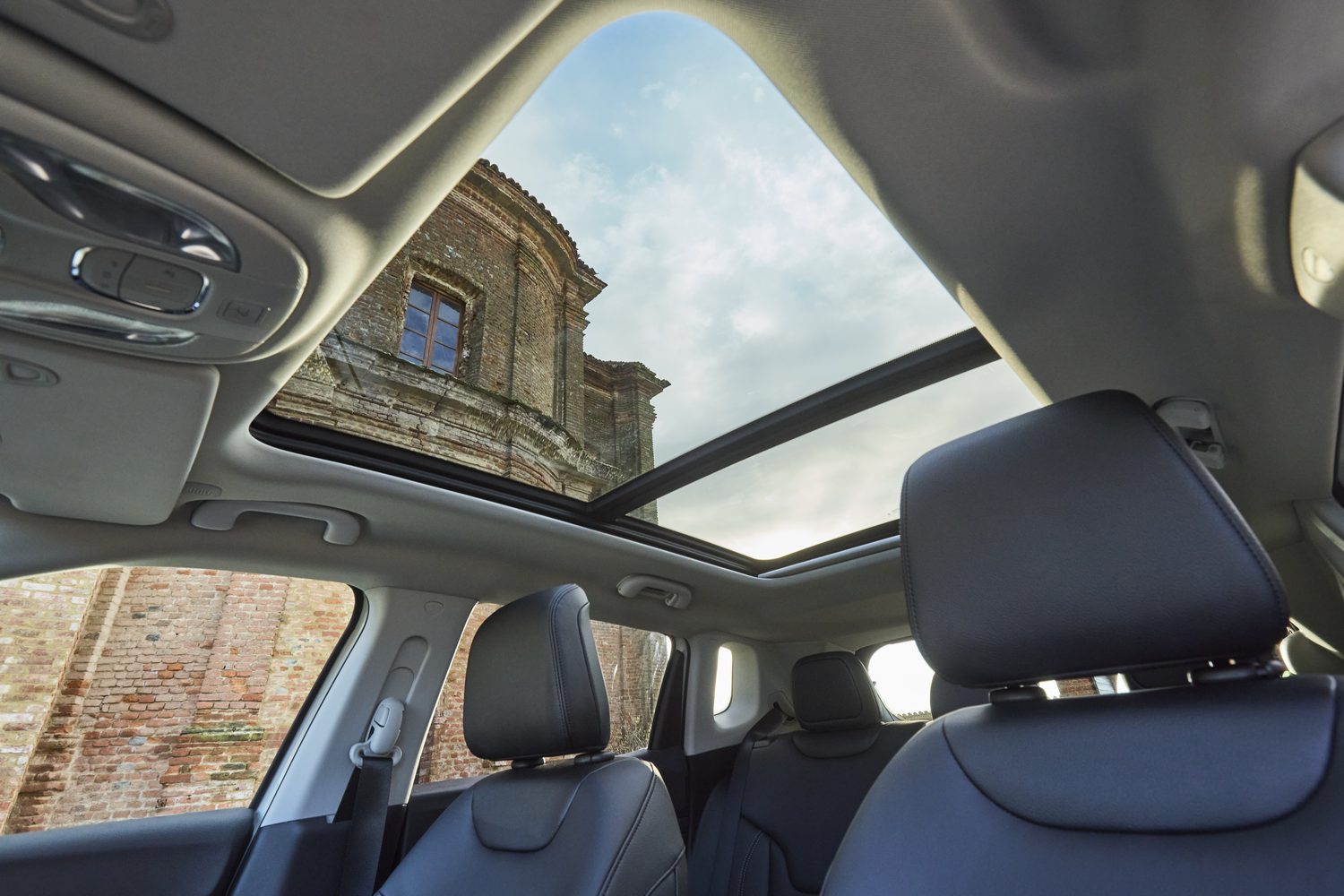
Driving it
'Nothing particularly exciting or memorable' is a turn of phrase which could apply to the way the Compass e-Hybrid drives, too. In terms of the handling, which is not this car's reason for being, it's OK. The steering is light and feel-free, and the body control has a degree of lean, pitch and dive to it if you start driving a bit quicker on twisty roads, so your passengers won't thank you much as they'll start to feel like they're being thrown around the cabin. But nothing here is appalling - the Compass grips reasonably well and doesn't lose total control of its body in tighter turns.
The so-so cornering experience wouldn't be a problem at all if the Compass e-Hybrid were superb at rolling refinement and ride comfort. But even here, it can't quite meet the higher standards of some of its best rivals in this class. Throwing in the mitigating caveat that the Jeep we were testing was on winter tyres in sub-optimal conditions for such things, there was still too much wind and suspension noise evident on rougher surfaces, while the e-Hybrid's 1.5-litre petrol-electric drivetrain is shared with the Renegade - and it's nowhere near the most sophisticated system of its type.
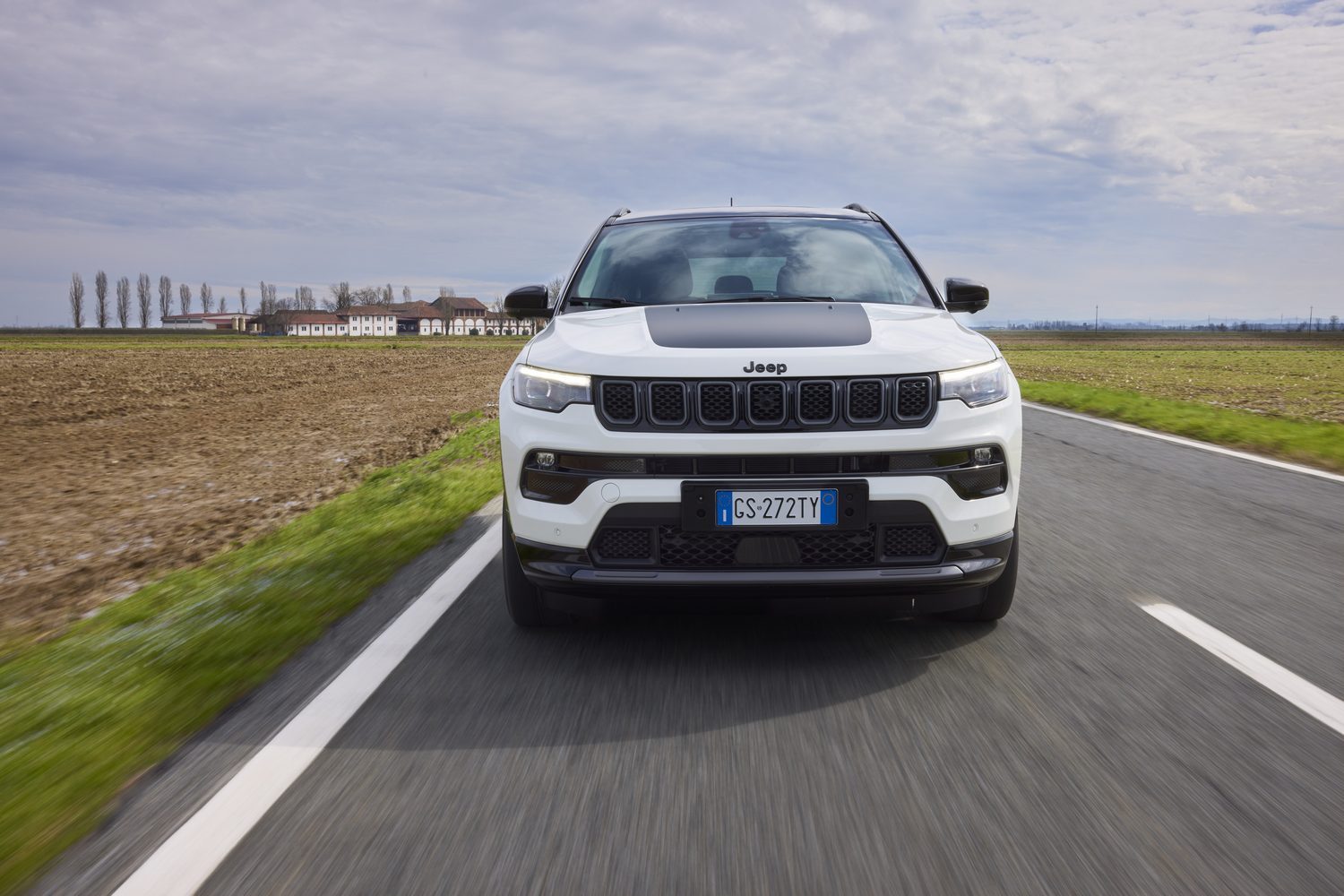
Admittedly, the Compass seems to isolate you better from the machinations of the 1.5-litre T4 engine than in the more affordable Renegade, but you can still hear coarse noises when the petrol motor is revving, while the seven-speed dual-clutch transmission is occasionally recalcitrant and not the slickest-shifting gearbox in the world.
At least the drivetrain gives the Compass e-Hybrid a fair turn of speed. It's obviously not quick, but there's enough low-down grunt to ensure the Jeep is quite responsive if you need it to nip into gaps in traffic or perform the occasional overtake. A quoted 5.6-6.0 litres/100km is not to be sniffed at either, especially as there is no diesel Compass in the range, and even though we didn't get near that on our test drive, we weren't driving the Jeep that sympathetically so we reckon owners will get closer to the official figures in more representative daily traffic conditions. It also tries as much as it can to run in electric mode, albeit you're talking about a tiny battery here so the minute you use significant inputs of the throttle, the combustion engine will fire up.
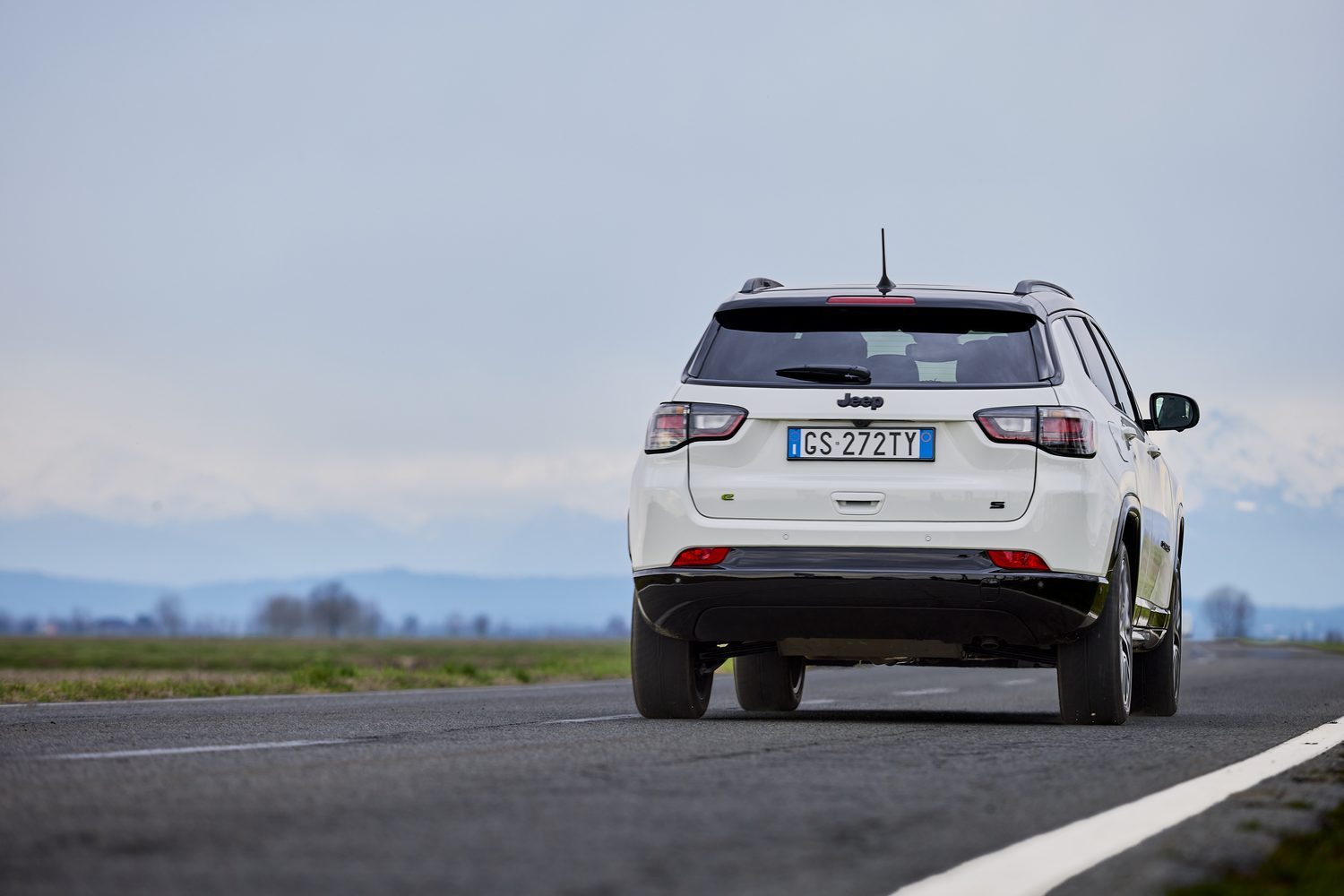
What you get for your money
Jeep sells the Compass e-Hybrid as a Limited and then this S-Model. The Limited, from €48,250, comes with most of the stuff you'd want anyway, such as 18-inch alloy wheels, heated front seats, auto high beam, dual-zone climate control, wireless smartphone charging, the twin 10-inch-plus digital screens and a whole host of driver assist safety features (among much more).
For the additional €3,500, the S-Model adds premium leather seats with black stitching, 19-inch gloss-black alloys, black and grey exterior detailing, the boot-mounted 'S' badge, inbuilt navigation for the infotainment system, a hands-free powered tailgate and traffic sign information.
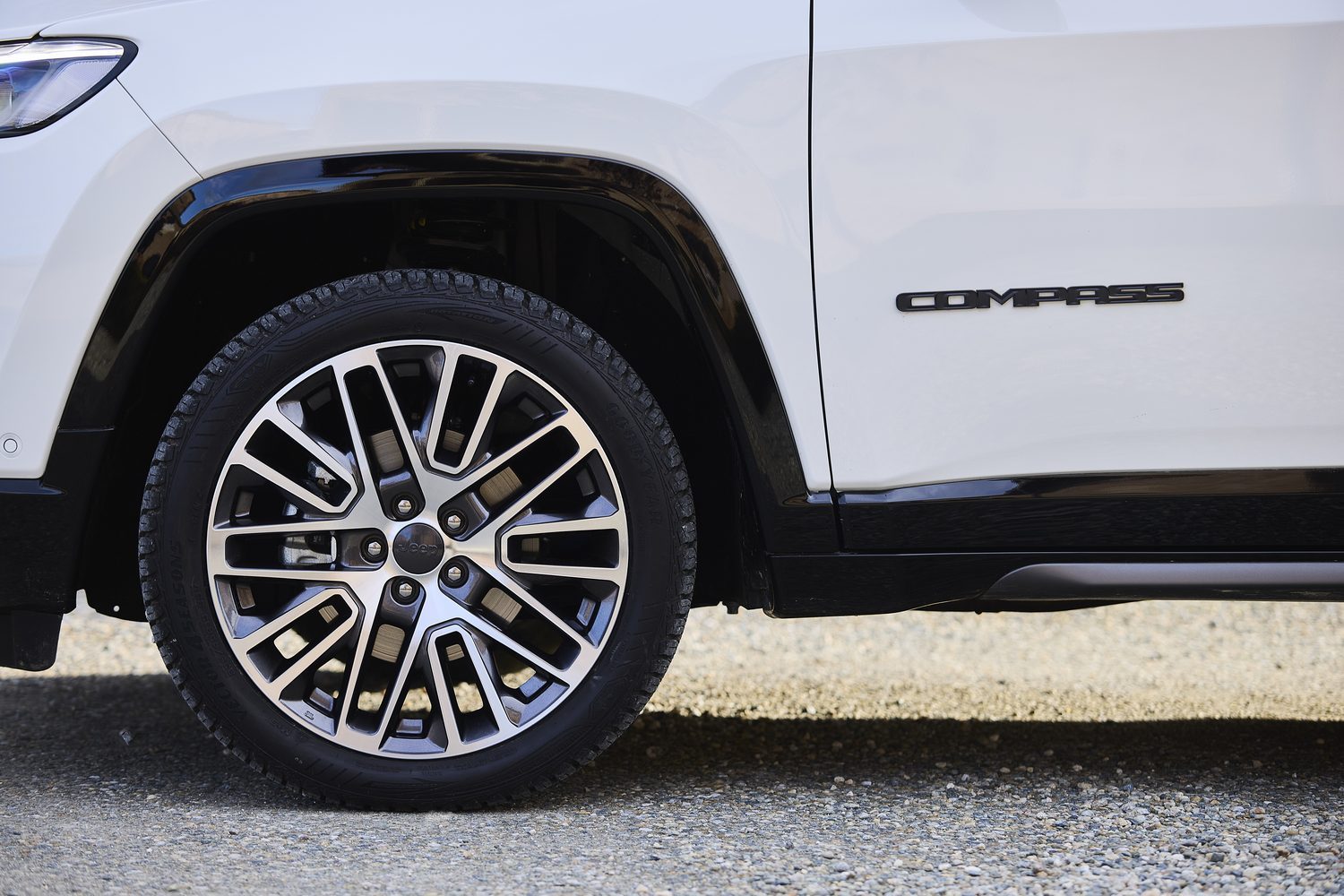
In isolation, that's a decent amount of equipment for an asking price that's neither cheap nor eye-wateringly expensive, but if you start to look around a bit, then the Jeep looks a bit dear - especially for how it drives as this e-Hybrid. For instance, you can get yourself into the far more accomplished - and far more powerful - Hyundai Tucson Hybrid from €42,245. There's a good reason the Korean vehicle is Ireland's best-selling car, and not the Jeep Compass instead...
Summary
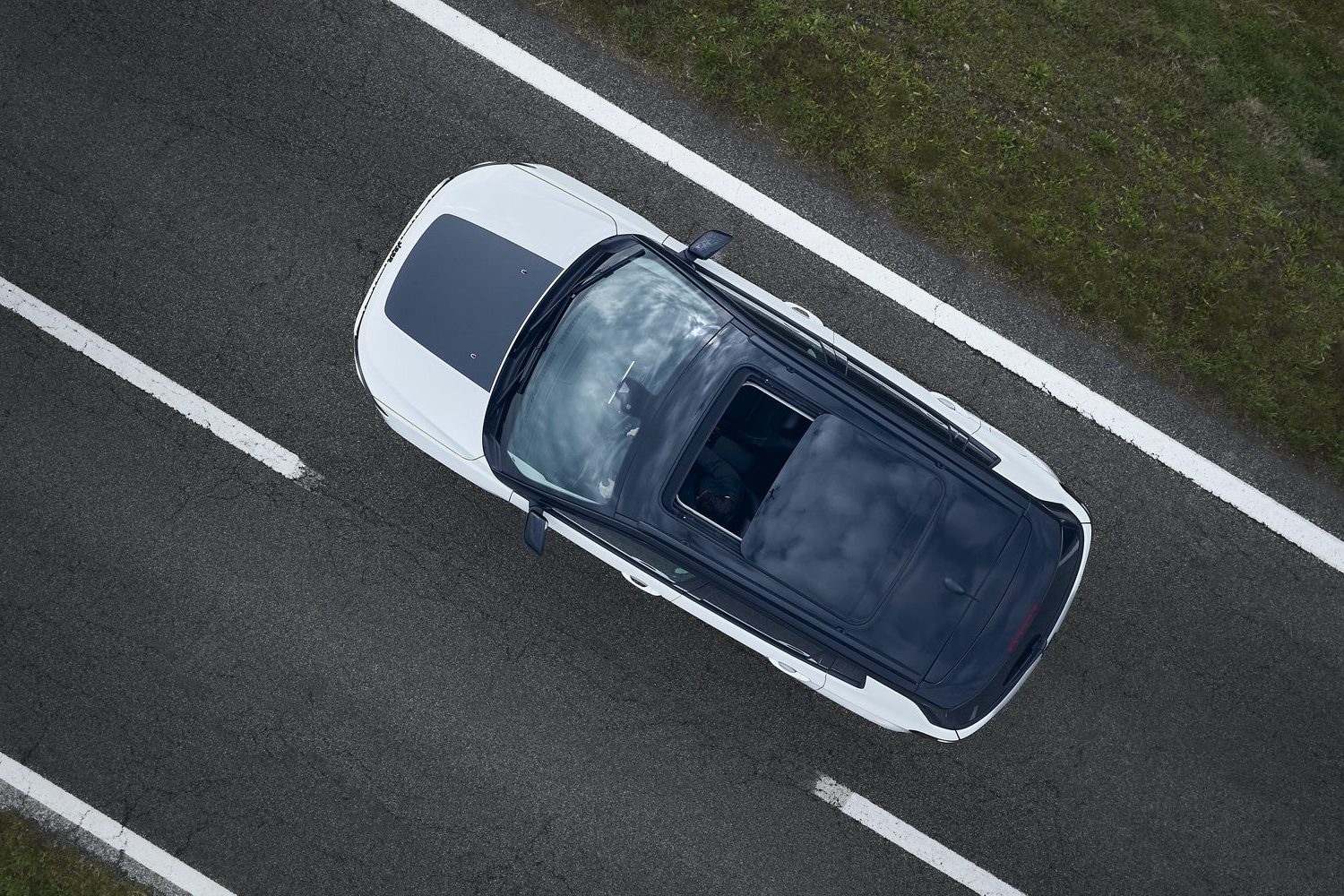
Jeep's Compass model has always felt like an outsider in the midsized crossover-SUV segment, something that you'd choose as an unusual alternative to the mainstream rather than a vehicle challenging for class honours. The e-Hybrid model and the very minimal changes Jeep has made to the car for 2024 - eco-rated tyres for a three per cent reduction in CO2 emissions, plus increased connectivity and Level 2 autonomous driving capabilities - do not transform it into something which takes this part of the marketplace by storm. This Compass e-Hybrid is OK to drive, look at and sit in, and nothing more, and it's not notably inexpensive to buy either. You might be happy with it if you end up buying one, but the plain fact is that there are better, more talented crossover options out there which won't cost you as much money to purchase in the first place.

